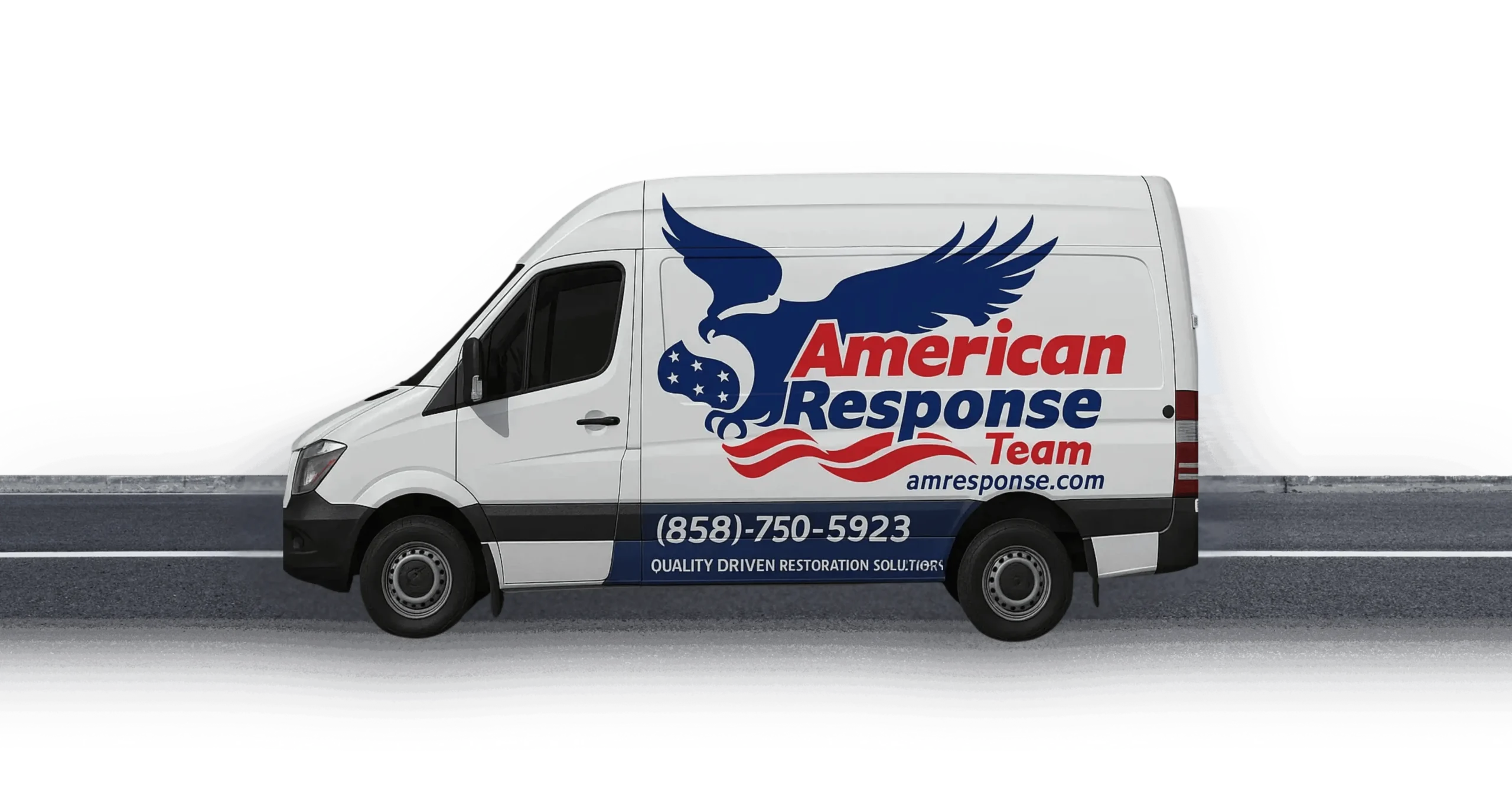If you live in San Diego and wonder, “Does homeowners’ insurance cover flooding?” you’re asking one of the most important questions about protecting your home. Many homeowners are shocked to discover that their regular insurance doesn’t cover flood damage – often after it’s too late.
The simple answer is no: standard homeowners insurance does not cover flooding. This can be a costly surprise that leaves families facing thousands of dollars in repairs. Understanding what your policy covers and what it doesn’t can save you from financial disaster when the next storm hits.
Does Homeowners Insurance Cover Flooding? The Truth About Standard Policies
Most people assume their homeowners’ insurance protects them from all types of water damage. Unfortunately, that’s not true. Standard homeowners policies specifically exclude flood damage, which means you’re not covered when water comes from outside sources, like:
-
- Heavy rainfall that overwhelms drainage systems
-
- Ocean waves or storm surge
-
- Overflowing rivers and streams
-
- Melting snow that causes flooding
-
- Broken water mains in the street
According to the Federal Emergency Management Agency (FEMA), flooding is the most common natural disaster in the United States, yet less than 4% of US households have flood insurance.
What Water Damage IS Covered by Homeowners Insurance
While homeowners’ insurance doesn’t cover flooding, it does protect you from certain types of water damage. The key difference is where the water comes from and how quickly it happens.
Covered Water Damage Usually Includes:
-
- Burst pipes inside your home
-
- Overflowing toilets, sinks, or bathtubs
-
- Washing machine or dishwasher malfunctions
-
- Roof leaks from storm damage (not from poor maintenance)
-
- Water damage from firefighting efforts
-
- Accidental discharge from air conditioning units
The important thing to remember is that covered water damage must be “sudden and accidental.” This means you couldn’t have predicted it would happen.
What’s NOT Covered:
-
- Gradual leaks that happen over time
-
- Water damage from poor maintenance
-
- Sewer backups (unless you have special coverage)
-
- Groundwater seepage through the foundation
-
- Any type of floodwater
Why Does Homeowners Insurance Not Cover Flooding?
You might wonder, “Why doesn’t homeowners’ insurance cover flooding if it’s so common?” The answer comes down to risk and money. Insurance companies exclude floods because they can cause massive damage to entire neighborhoods at once, creating claims that could bankrupt the company.
Think about it this way: when a pipe bursts in your house, it only affects your home. But when a river floods, it can damage thousands of homes simultaneously. That’s too much risk for private insurance companies to handle alone.
This is why the federal government created the National Flood Insurance Program (NFIP) in 1968. The NFIP provides flood insurance that private companies can’t offer affordably.
The National Flood Insurance Program: Your Safety Net
Since standard policies can’t answer “does homeowners insurance cover flooding” with a yes, you need separate flood insurance. The NFIP offers flood insurance to homeowners, renters, and businesses in participating communities.
NFIP Coverage Includes:
-
- Up to $250,000 for building coverage
-
- Up to $100,000 for contents coverage
-
- Foundation walls and electrical systems
-
- Furnaces, water heaters, and built-in appliances
-
- Personal belongings like furniture and clothing
According to FloodSmart.gov, the average annual premium for NFIP coverage is about $700, which is often less than what homeowners pay in annual interest on disaster loans.
San Diego’s Flood Risk: More Than You Think
Many San Diego residents think flooding insurance isn’t relevant because we don’t have major rivers or live on the coast. However, San Diego County faces several flood risks:
Local Flood Hazards:
-
- Flash floods from heavy winter rains
-
- Urban flooding from overwhelmed storm drains
-
- Coastal flooding during high tides and storms
-
- Dam and reservoir overflow
-
- Broken water mains and infrastructure failure
In fact, almost one-third of NFIP flood insurance claims come from areas outside high-risk flood zones. This means even if you don’t live in a designated flood area, you could still experience flood damage.
The Cost of Being Wrong About Flood Coverage
When homeowners discover that the answer to “Does homeowners’ insurance cover flooding?” is no, it’s often too late. Here’s what you might face without flood insurance:
Typical Flood Damage Costs:
-
- Just 1 inch of water can cause $25,000+ in damage
-
- Flooded basements often cost $10,000-$50,000 to repair
-
- Complete home restoration can exceed $100,000
-
- Personal belongings replacement adds thousands more
Without flood insurance, these costs come out of your pocket. Federal disaster assistance, when available, is typically a loan that must be repaid with interest. According to FEMA data, homeowners without flood insurance received an average of $3,000 in federal assistance, while those with NFIP policies received an average claim payment of $66,000.
How to Get Flood Insurance in San Diego
Now that you know homeowners’ insurance doesn’t cover flooding, here’s how to protect yourself:
Step 1: Check Your Risk
Visit FEMA’s Flood Map Service Center to see if you live in a high-risk flood zone. Even if you’re in a low-risk area, consider getting coverage since flooding can happen anywhere.
Step 2: Contact Your Insurance Agent
The same agent who sells your homeowners’ insurance can help you buy flood insurance. You can also call the NFIP at (877) 336-2627 for help finding an agent.
Step 3: Plan Ahead
There’s typically a 30-day waiting period before your flood insurance takes effect. Don’t wait until a storm is approaching to buy coverage.
What to Do If You Experience Flood Damage
If flooding does occur, take these immediate steps, whether or not you have flood insurance:
-
- Ensure Safety First: Don’t enter flooded areas if electrical outlets or appliances might be submerged
-
- Document Everything: Take photos and videos of all damage before cleaning up
-
- Contact Your Insurance: Call both your homeowners insurance and flood insurance companies immediately
-
- Start Water Removal: Begin extracting water as soon as it’s safe to do so
-
- Prevent Mold Growth: Professional water damage restoration should begin within 24-48 hours
Professional water extraction and drying is crucial to prevent mold growth and structural damage. Even if your homeowners’ insurance doesn’t cover the flood itself, quick action can minimize the damage.
American Response Team: Here When Flooding Strikes
Whether you have flood insurance or not, fast professional response is critical after any flooding incident. American Response Team provides 24/7 emergency flood restoration services throughout San Diego County.
Our certified technicians understand the insurance process and can help you navigate claims with both your homeowners insurance company and flood insurance provider. We work directly with insurance companies and provide detailed documentation to support your claim.
Our Flood Restoration Services Include:
-
- Emergency water extraction and removal
-
- Structural drying and dehumidification
-
- Mold prevention and remediation
-
- Content cleaning and restoration
-
- Complete reconstruction services
Common Myths About Flood Insurance Coverage
Many homeowners have misconceptions about flood coverage. Let’s clear up some common myths:
Myth: “I don’t need flood insurance because I don’t live in a flood zone”
Fact: More than 25% of flood insurance claims come from outside high-risk flood zones. Flooding can happen anywhere due to storms, broken pipes, or poor drainage.
Myth: “Federal disaster assistance will cover my flood damage”
Fact: Federal disaster assistance is only available when the President declares a disaster, which happens in less than 50% of flooding events. Even then, assistance usually comes as a loan that must be repaid with interest.
Myth: “Flood insurance is too expensive”
Fact: The average NFIP policy costs about $700 per year – often less than the annual interest on a disaster loan. Consider this a small price for protecting your most valuable asset.
The Bottom Line: Does Homeowners Insurance Cover Flooding?
The answer to “Does homeowners’ insurance cover flooding?” is definitely no. Standard homeowners’ policies exclude flood damage, leaving you financially vulnerable to one of the most common natural disasters.
Here’s what every San Diego homeowner should remember:
-
- Homeowners’ insurance covers sudden, accidental water damage from inside sources
-
- Flood damage requires separate flood insurance
-
- Flooding can happen anywhere, not just in high-risk areas
-
- There’s a 30-day waiting period for flood insurance to take effect
-
- Federal disaster assistance is limited and often comes as a loan
Don’t wait until the next storm to think about flood protection. Contact your insurance agent today to discuss flood insurance options. For more information about preventing water damage, read our guide on what happens when water damage is left untreated.
If you’re currently dealing with flood damage or want to learn more about protecting your home, American Response Team is here to help. Our experienced team can assess your property, work with your insurance company, and restore your home quickly and safely.
Need emergency flood restoration services? Contact American Response Team at (858) 533-0689. We’re available 24/7 to help San Diego homeowners recover from flood damage quickly and completely.
Additional Resources
For more information about flood insurance and water damage protection, visit these authoritative sources:
-
- FEMA Flood Insurance Facts – Official myths and facts about flood coverage
-
- NFIP Eligibility Requirements – Find out if you qualify for flood insurance
-
- FEMA Flood Insurance Guide – Complete information about flood protection
Remember, understanding that homeowners’ insurance doesn’t cover flooding is just the first step. Taking action to protect your property with appropriate insurance and knowing who to call for emergency restoration can make all the difference when disaster strikes.
Learn more about our emergency response protocols and discover how to protect your San Diego home from common water damage mistakes that can make insurance claims more difficult.

